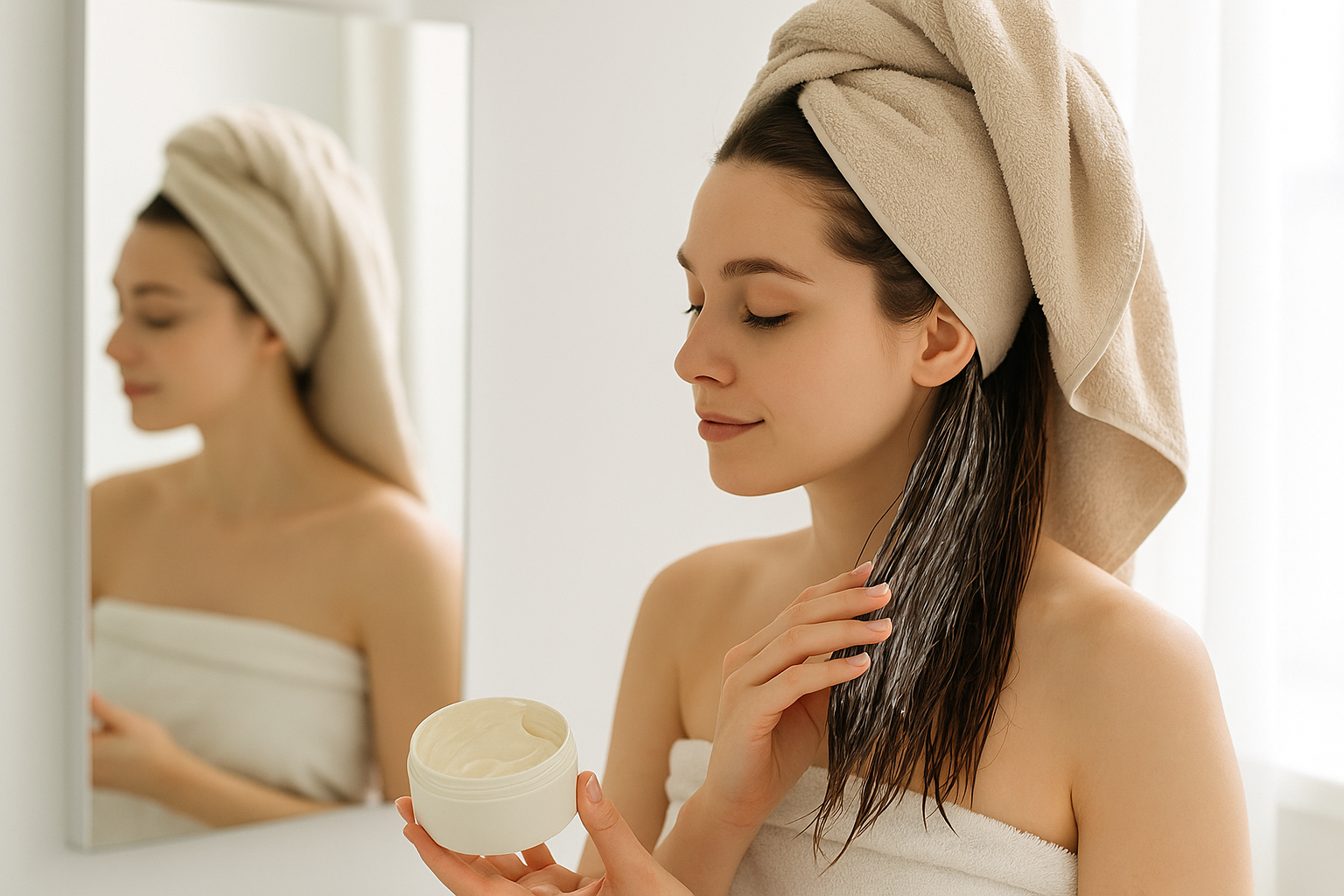Hair masks are everywhere now. Shelves full of tubs and packets, all promising “deep repair” or “intense moisture.” They sound fancy, but at the end of the day, they’re just a richer version of conditioner. The real confusion comes after you scoop some out: How Long Should You Leave a Hair Mask On? Five minutes? Half an hour? Overnight? Everyone seems to have a different answer, and the truth is a little less dramatic than the marketing makes it sound.
What a Hair Mask Really Does
Before talking about time, it helps to know what’s going on when you slather a mask through your hair. Regular conditioner mostly smooths the outside of the strand, so your hair feels softer right away. A mask is thicker and loaded with ingredients that are supposed to sink deeper: proteins, oils, moisture. That’s why people say it “repairs” or “revives” your hair.
But here’s the catch: your hair is not a sponge. It only takes in so much before it reaches its limit. Which means leaving a mask on all night won’t magically make your hair ten times stronger. It just means you’ll wake up with a product still sitting there.
Also Read: Can stress really cause hair fall?
The Sweet Spot for Time
Most store-bought masks are designed to work in a small window. Check the label and you’ll usually see something like 5 to 20 minutes. That’s not marketing fluff. That’s genuinely how long it takes for the ingredients to do what they can.
If it’s a lighter, hydrating mask, five to ten minutes usually does the job. If it’s thick, protein-heavy, or aimed at really damaged hair, then giving it closer to 20 minutes makes sense. Beyond that? You don’t gain much.
What Happens If You Overdo It
A lot of people think, “If 20 minutes is good, two hours must be amazing.” Not quite. Leaving a mask too long can backfire.
1: Protein masks can make hair stiff or almost crunchy. Too much protein makes strands less flexible, so they snap.
2: Moisture masks can make hair feel heavy and greasy. You’ll wash it out and wonder why your hair looks flat instead of bouncy.
3: Anything applied to the scalp for too long can clog pores or cause itching.
So yeah, longer isn’t always better.
Also Read: How long does it take for hair to grow back after hair fall?
Hair Type Makes a Difference
Your texture plays a big role in timing.
Fine hair usually gets overwhelmed fast, so stick to shorter times, about five to ten minutes. Thick or coarse hair can handle richer masks and does better with closer to 20 minutes. Curly or coily hair tends to be drier by nature, so leaving a moisturizing mask on for 20, sometimes 30 minutes, is fine. If your hair is bleached or chemically treated, masks help a lot, but you still want to follow the product directions.
DIY Masks at Home
Not everyone buys store masks. Some people mix avocado, yogurt, or oils in their kitchen. With DIY masks, you can leave them on longer, usually 20 to 40 minutes, since natural oils work slower than lab-made formulas. But again, don’t push it overnight. Food goes bad, oils get messy, and you’re not giving your hair extra magic by keeping it in for hours.
How Often Should You Mask?
Even if you love the feeling, you don’t need to do it every day. For most people, once a week is plenty. Really dry or damaged hair might enjoy twice a week, but daily use just overloads it. Think of it like a face mask: once or twice is nice, every day is too much.
Also Read: What vitamin deficiency causes hair fall the most?
Tips That Actually Matter More Than Time
Honestly, how you use a mask makes a bigger difference than the exact number of minutes.
1: Start with clean hair. Shampoo first so the mask can reach the strand instead of sitting on top of oil and buildup.
2: Focus on mid-lengths and ends. That’s where the damage is. Unless it’s a scalp mask, you don’t need to rub it into your roots.
3: Comb it through. A wide-tooth comb spreads it evenly so every section gets some.
4: Add heat if you can. A warm towel or shower cap helps open the cuticle and lets the mask sink in better.
5: Rinse well. If you leave the product behind, your hair just feels sticky instead of soft.
Do these steps right, and even ten minutes feels like it works harder than an hour of sloppy application.
Overnight Masks — Are They Worth It?
You’ll see people online swearing by leaving a mask on all night. Unless the product says it’s safe for overnight, it’s not a great idea. Most masks are too heavy for that much time, and you risk buildup or irritation. If you really want an overnight treatment, oils like argan or almond are better choices. They’re lighter, and you can wash them out easily in the morning without the downsides of protein overload.
Also Read: How often should you oil your hair for hair growth?
Conclusion
How many minutes do you really need to leave a hair mask on? In most cases, somewhere between 5 and 20 minutes is all you need. Curly, coarse, or extra-dry hair might benefit from a bit longer, but leaving it on for hours doesn’t do much except make a mess. What matters more is using the right mask for your hair type, applying it properly, and rinsing it out well. Give your hair a mask once a week, stick to that sweet spot of time, and you’ll see the difference without overdoing it.


